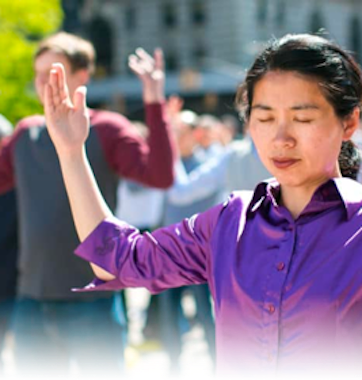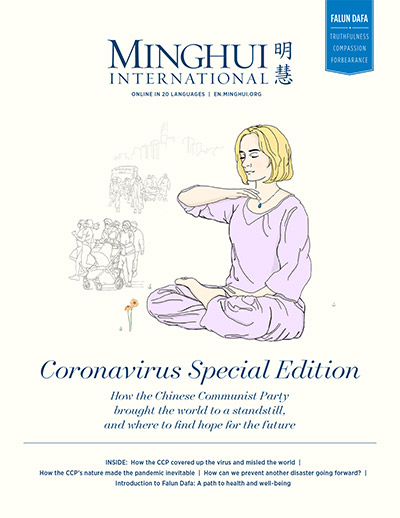(Minghui.org) A fellow practitioner stopped practicing Falun Dafa after the persecution began in 1999. Years later, with the help of other practitioners, she resumed her practice. She told me that her problem had been not studying the Fa enough.
Later during a sharing session, she said again that her problem was not studying enough Fa. Over the years, it has become her pet phrase to say she’s looked within and known her problem was insufficient Fa-study. She would use it to show she has done what’s required of cultivators, namely, looking within, yet she has constantly failed to rectify the problem she identified.
Don’t Stop at Just Identifying Our Attachments
There are also some other practitioners who rushed to give a long list of their attachments even before others could point out where they fell short in cultivation. While they were good at identifying their attachments, they have never made an effort to change themselves, even after years of cultivation.
Master told us in the Fa that looking within is a magic tool. But we should not stop just there. We should actively cultivate our attachments and human notions once we discover them.
When we look within and find our attachments, it does not mean that we’ve cultivated well or that we could use that as an excuse to shield ourselves from listening to others.
The Purpose of Looking Within
Some fellow practitioners do not look within until they are at the point of having no choice but to look within. They are stuck in their cultivation and they are facing a conflict that cannot be resolved unless they rectify themselves. In that case, their purpose of looking within is not pure. They do it to resolve their problems.
For example, when some practitioners’ children or grandchildren came across some tribulation, they would look within very hard and state that they did not cultivate well; otherwise, their children wouldn’t have encountered such tribulations. Their purpose was to ensure their children a happy and peaceful life, not their own improvement.
A fellow practitioner lost all her savings due to the mishandling of money by her child, but she still managed to squeeze money out from her pension to give to her child, even claiming that her child helped her eliminate her karma. She diligently cultivated herself and wished that through her painstaking cultivation, her child would have a better life. That is her attachment, but she goes round and round to avoid her true human heart.
Another common problem we often see in practitioners is when one’s sickness karma lasted a long time, one tried desperately to look inwards. In that case, the purpose of their cultivation wasn’t to truly improve themselves, but for the sake of eliminating sickness karma.
The purpose of looking within is to find one’s attachments and eliminate them. Only when we truly cultivate ourselves, can we achieve constant elevation in our realms.
Halfhearted Efforts of Looking Within
I know another fellow practitioner who never cared to identify deep-rooted attachments. Whenever he came across tribulations, he would also look within, but if you asked him what he identified, he would say, “Oh, it’s just the human heart.”
“Anything else?”
“Well, selfishness.”
“What else? All attachments are human hearts. That’s all.” And then he would become impatient.
This type of halfhearted effort in looking within will accomplish nothing. If one has no interest in searching for the root cause of one’s attachment, it would be hard to get rid of it.
I used to be this way myself. Even if I was wrong, I would argue and explain, and do anything but admit my fault.
With continuous Fa study and cultivating my heart, I gradually realized that what I wanted to protect was my selfishness, and “selfishness” and “death” are homophones in Chinese. I was soberly aware that if I still stubbornly held on to this “selfishness,” it would be a dead-end to my cultivation.
With further cultivation, I gradually matured. Whenever I look within and find my attachment, I will immediately eliminate it without delay. I refuse to let it linger on for years.
I cannot say that I can eliminate my attachments cleanly and completely in one shot, but I can feel when I elevate, and when the same attachment appears, I can manage it with a different mindset. The repetition is often, but I encourage myself not to get disheartened, to learn my mistakes and lessons, and keep at it no matter how hard it is. Usually, I get through it with a lot of Fa study.
Cultivation is a repeated tempering process, and in the end, real gold is forged.
This is my understanding at my level. Please point out anything inappropriate.
Editor’s note: This article only represents the author’s understanding in their current cultivation state meant for sharing among practitioners so that we can “Compare with one another in study, in cultivation.” (“Solid Cultivation,” Hong Yin)
Views expressed in this article represent the author's own opinions or understandings. All content published on this website are copyrighted by Minghui.org. Minghui will produce compilations of its online content regularly and on special occasions.
Category: Improving Oneself










